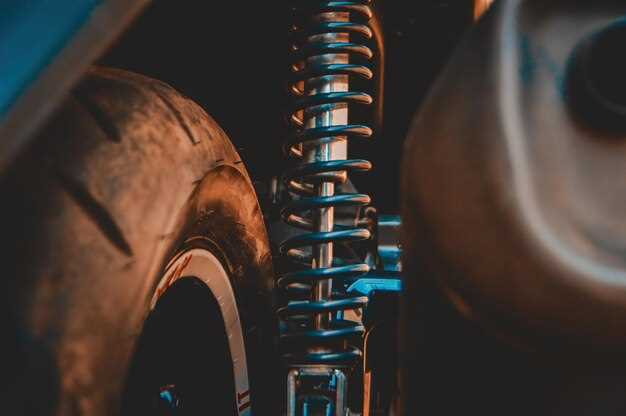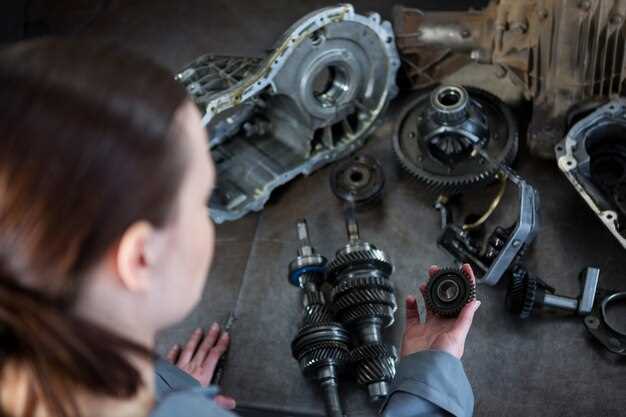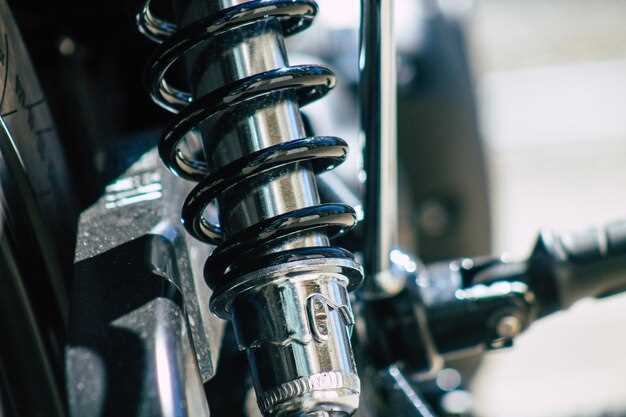
The performance of your vehicle on the track is significantly influenced by its suspension system. Among the various options available, coilovers stand out as a popular choice for racing enthusiasts seeking to enhance their car’s handling dynamics. By adjusting ride height and damping characteristics, coilovers allow for a more tailored driving experience, ultimately leading to improved lap times and overall performance.
When you decide to upgrade your suspension with coilovers, you are investing in a solution that provides both versatility and precision. Unlike factory suspension setups, coilovers offer adjustable settings that enable drivers to fine-tune their vehicle’s response to varying track conditions. This customization empowers you to optimize grip, cornering stability, and balance, which are essential for competitive racing.
In the world of motorsports, every fraction of a second counts. A well-tuned suspension can mean the difference between a podium finish and a missed opportunity. With coilovers, you gain the ability to adapt your ride to different tracks and weather conditions, ensuring that your vehicle performs at its best, lap after lap. This article delves into the benefits of upgrading your suspension with coilovers and how it can significantly enhance your track performance.
Understanding Coilovers: What Are They and How They Work?
Coilovers are a popular suspension upgrade that combines a shock absorber and a coil spring into a single unit. They are designed to provide better handling, improved ride quality, and the ability to adjust the vehicle’s ride height. Understanding how coilovers work is essential for anyone looking to enhance track performance.
Here’s a breakdown of the main components and functionality of coilovers:
- Shock Absorber: The shock absorber helps control the damping of the suspension movement. It adjusts the amount of resistance to the spring’s compression and rebound, allowing for better handling during turns and over bumps.
- Coil Spring: The coil spring supports the weight of the vehicle and absorbs impacts from the road. The spring rate can be adjusted to suit different driving styles and conditions, enabling a firmer or softer ride as needed.
- Adjustment Mechanisms: Many coilover systems include adjustable features that allow drivers to change the ride height and damping settings. This means you can fine-tune your suspension setup based on track preferences or specific driving conditions.
Coilovers provide several advantages over traditional suspension systems:
- Height Adjustment: You can lower or raise your vehicle’s ride height, enhancing aerodynamics and stability on the track.
- Improved Handling: With better control over suspension travel, coilovers maximize tire contact with the road, improving grip during high-speed maneuvers.
- Customization: Coilovers allow for tailored adjustments that fit your driving style, whether you’re focused on street driving or competitive racing.
In conclusion, upgrading to coilovers is a strategic move for anyone serious about improving their track performance. Understanding the components and functionality of coilovers will help you make informed decisions for your vehicle’s suspension setup.
Key Benefits of Coilover Suspension for Track Racing

Upgrading your vehicle’s suspension to a coilover setup offers several advantages specifically beneficial for track racing. One of the primary benefits is the ability to adjust ride height. This feature allows racers to lower their vehicles for improved aerodynamics and a lower center of gravity, enhancing stability during high-speed cornering.
Another significant advantage of coilover suspension is the customizable damping settings. Racers can fine-tune the compression and rebound, optimizing the suspension to match track conditions or personal driving style. This level of adjustment leads to better handling, allowing for more precise control through turns and enhanced grip.
Coilovers also provide superior rigidity compared to traditional spring setups. This increased stiffness can reduce body roll, contributing to better cornering performance. Furthermore, the adjustable spring rates give drivers the flexibility to select a softer setting for bumpy tracks or a stiffer setting for smooth circuits.
Durability is another advantage; high-quality coilover kits are designed to withstand the rigors of track racing. Their robust construction ensures consistent performance over numerous race weekends without the degradation often seen in stock suspension components.
In summary, upgrading to coilover suspension not only enhances track performance through adjustable ride height and damping but also provides increased rigidity and durability. These factors collectively contribute to a more engaging and competitive racing experience.
Identifying the Right Coilovers for Your Vehicle Model
Choosing the appropriate coilovers for your vehicle is essential for maximizing track performance. Start by researching the specifications of your vehicle model, as each model may have different requirements for suspension upgrades. Consider factors such as weight distribution, intended use, and ride height adjustments.
Next, evaluate the compatibility of coilovers with your vehicle’s chassis and existing components. Look for products specifically designed for your make and model; many manufacturers provide lists or recommendations for various vehicles. Ensure that the coilovers offer adjustable damping settings, which will allow for fine-tuning performance to suit specific track conditions.
It is also vital to assess the quality of materials used in the coilovers. High-strength materials enhance durability and performance under extreme conditions, prevalent in track driving. Examine user reviews and ratings to gauge real-world performance and reliability from other enthusiasts with the same vehicle.
Another consideration is the level of installation difficulty. Some coilover kits may require professional installation, while others can be upgraded as a DIY project. Confirm that you have the necessary tools and expertise or access to a professional service if needed.
Lastly, keep your budget in mind. While it is tempting to go for the cheapest option, investing in high-quality coilovers can lead to better handling, improved comfort, and longevity. Strike a balance between cost and performance to ensure your suspension upgrade is worth the investment.
Step-by-Step Guide to Installing Coilovers
Upgrading your suspension with coilovers can significantly enhance your vehicle’s performance on the track. Follow this detailed guide to install coilovers correctly and efficiently.
Step 1: Gather Your Tools and Materials
Before starting, you will need a set of coilovers, a jack, jack stands, a wrench set, a socket set, a spring compressor, and possibly a torque wrench. Ensure you have all necessary tools at hand to avoid interruptions during installation.
Step 2: Prepare Your Vehicle
Park your vehicle on a flat surface and activate the parking brake. Loosen the lug nuts on the wheels before raising the car with a jack, and secure it on jack stands to ensure safety.
Step 3: Remove the Existing Suspension
Start by removing the wheels. Then, use your wrench and socket set to detach the factory struts from the upper and lower mounting points. Make sure to disconnect any sway bar links and brake lines that may obstruct the removal of the struts.
Step 4: Install the Coilovers
Carefully position the coilover into the strut tower and align it with the mounting holes. Attach the coilover to the upper mounting points first, then secure it to the lower control arm. Ensure that all bolts are tightened adequately to prevent movement during driving.
Step 5: Adjust the Ride Height
Before securing everything, adjust the coilovers to your desired ride height. The pre-load on the spring should also be adjusted for optimal performance. Refer to the coilover’s manual for specific instructions on setting the pre-load.
Step 6: Reassemble Any Removed Components
Reinstall any sway bar links, brake lines, and other components you detached earlier. Make sure all parts are securely fastened and that there are no loose ends. Double-check your work as you go.
Step 7: Reinstall the Wheels
Once the coilovers are installed and everything is tightened, put the wheels back on. Hand-tighten the lug nuts before lowering the vehicle back to the ground.
Step 8: Complete the Installation
After lowering the vehicle, use a torque wrench to tighten the lug nuts to the manufacturer’s specifications. This ensures that your wheels are securely fastened and ready for track performance.
Step 9: Test Drive and Fine-Tune
Take your vehicle for a test drive to evaluate the new suspension set-up. Observe the handling and comfort levels. Based on your experience, you may need to make further adjustments to the coilovers to achieve optimal performance on the track.
Completing this installation process will upgrade your suspension and significantly improve your vehicle’s track performance. Enjoy the ride!
Tuning Your Coilovers for Optimal Track Handling

Proper tuning of your coilovers is crucial for achieving the best performance on the track. Coilovers provide adjustable ride height and damping, enabling you to tailor your suspension setup for specific track conditions. Effective tuning can enhance grip, reduce body roll, and improve overall handling characteristics.
Begin by adjusting the ride height. A lower center of gravity helps maintain vehicle stability during high-speed cornering. However, be cautious not to lower the suspension excessively, as this can lead to bottoming out. Aim for a balance that optimizes aerodynamics without sacrificing suspension travel.
The next step is to adjust the damping settings. Many coilovers feature adjustable compression and rebound rates. Tune the compression to provide support during cornering, while adjusting the rebound to control how quickly the suspension returns to its original position. A stiffer setup often works best for smooth racetracks, while softer settings may be advantageous on bumpy surfaces.
| Setting | Recommendation |
|---|---|
| Ride Height | Lower for lower center of gravity, avoid excessive reductions |
| Compression Damping | Increase for better corner support |
| Rebound Damping | Adjust for quick return without bouncing |
Furthermore, don’t forget to align your suspension after making changes to your coilover settings. Proper alignment optimizes tire contact with the road, maximizing grip and ensuring even tire wear. Consider negative camber to improve cornering capabilities, while keeping toe adjustments to a minimum to maintain stability on straight sections.
Finally, test your settings on the track. Evaluate how changes affect handling dynamics and make incremental adjustments. Track conditions often change, so stay adaptable and tune your coilovers accordingly to maintain optimal performance.
Common Mistakes to Avoid When Upgrading Suspension
Upgrading your suspension can significantly enhance your vehicle’s performance on the track. However, several common mistakes can hinder your efforts and lead to suboptimal results. One of the most frequent errors is choosing the wrong type of coilovers. It’s essential to select coilovers designed for your specific vehicle and intended use, as not all coilovers are created equal. Researching brands and reading customer reviews can help prevent this mistake.
Another common pitfall is neglecting to align your vehicle properly after installation. A new suspension setup, especially coilovers, can alter the geometry of your vehicle, which may lead to uneven tire wear and compromised handling. Always schedule a professional alignment after upgrading your suspension to ensure optimal performance and safety.
Many enthusiasts also underestimate the importance of adjusting the settings on their new coilovers. Failing to fine-tune dampening and ride height can result in a harsh ride or poor handling characteristics. Take the time to test different settings in a controlled environment to find the perfect balance for your driving style and track conditions.
Lastly, avoid the mistake of overlooking the importance of quality installation. Whether you choose to do it yourself or hire a professional, ensure that the installation is performed meticulously. Poor installation can lead to premature wear, failure of components, and compromised safety. Always follow the manufacturer’s guidelines and consider seeking professional assistance if you’re unsure about the process.
